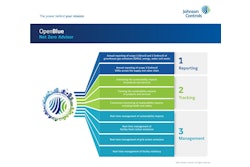
Article originally appeared on thelienzone.com
By Patrick Barthet
Homebuilders are accustomed to managing expectations. They do this at the initial client meeting, when drafting contract provisions and in all progress meetings. As the project moves from design to occupancy, smart builders work hard to deliver the highest quality work possible while at the same time not promising more than they can deliver. Besides making for happier customers, this also helps minimize a builder’s liability.
Managing expectations is a bit more complicated when it comes to high-performance construction, as different homeowners will have different expectations about their home’s performance in regards to heating and cooling, moisture issues and indoor air quality. Those expectations may or may not be realistic, and the only way to make sure they are is to put them in writing and to have everyone sign off.
Use a warranty to define expectations
In fact, as an attorney who works with builders I always recommend a written, contractual warranty that defines exactly what the builder is and isn’t promising when it comes to home performance. Otherwise they’re at the mercy of implied warranties, which vary in coverage and term from state to state and can be open to interpretation.
And interpretation can cause big problems. When you market yourself as a high performance builder, you are positioning yourself as an expert, and as such you will likely be held to a higher standard. Homeowners who contract for a home with a high-performance building expert will expect a comfortable and secure structure built to more stringent specifications than a home built to minimum code standards. Some will assume you are promising everything from low energy bills to great air quality.
Take the issue of indoor air quality, a growing source of liability. We have seen builders sued for everything from serious problems like an aggravated asthma condition to minor ones like undefined odors. How do you minimize these problems? By implementing a warranty.
In many cases a court will give precedence to a contractual warranty. Even if it’s not as strict as the implied warranty, it is very helpful. This is an important piece of protection. You work hard to craft homes with a healthy indoor environment, but that environment has as much to do with how the homeowners operate the home after you deliver it, as it does with how you built it.
A contractual warranty can also assist the homeowners by defining what they need to do to maintain a healthy environment. That could include everything from advising them to keep doors and windows closed to how to properly run the mechanical ventilation system, and warning them not to use certain types of chemical cleaning products.
The warranty can also spell out what homeowners can expect from smart devices such as a NEST thermostat, or what types of light sources will work with their LED fixtures. In most cases you can simply reference the manufacturer’s warranties. If the homeowner insists on a device that’s not part of your standard specifications and not included in your warranty, then your contractual warranty should make those exclusions clear.
Read next: How to write your warranty
What is in your homebuilding warranty
The standard duration of a builder’s warranty is one year for workmanship issues, possibly extended to two years for systems — HVAC, plumbing and electrical — and then 10 years for structural failures. (Make sure to distinguish these from minor cracking and settling.)
When it comes to specific products, your warranty should clearly delineate between manufacturing defects and installation errors. It should also set fixed warranty terms that mirror what the manufacturer of each product or device provides.
The warranty should also limit liability by placing a realistic monetary cap on the sometimes ambitious goals set by homeowners. Excluded from all warranties should be matters involving the homeowner’s own negligence, abuse or failure to maintain as required, as well as work done by the homeowner or the homeowner’s own contractors.
The warranty should also define things like expansion and contraction of wood, dampness, condensation and weather-related issues. This language will vary from builder to builder and from location to location. For instance a builder in Seattle would probably want more definition regarding its responsibility for moisture-related issues than a builder in Tucson.
Read next: How A Contract Clause Can Change Your Damage Recovery or Liability
Finally, every warranty needs to spell out the following:
- How is a claim to be communicated to the builder? In writing, with a return receipt, is preferred. (This can be done electronically, for instance with an email read receipt.)
- Who will do the warranty work and when? I suggest limiting it to defined business hours by folks selected by the builder.
- How will disputes be addressed? I prefer to specify a neutral but experienced mediator selected in advance and agreed on by both parties. A good way to do this is to provide three names and have the homeowner choose one. Mediation may result in an impasse, so you may want to set arbitration as the subsequent mechanism if mediation fails to resolve a dispute. (Be aware, however, that arbitration isn’t subject to the same rules of evidence and testimony as a court, and that decisions can’t be easily appealed.)
- Who will pay legal fees? Your contractual warranty should also require that each party pay its own legal fees and costs. This prevents an opportunistic homeowner from trying to inflate a claim by suing for legal fees. This encourages both parties to settle.
None of this implies that you don’t want to do the absolute best for your customers. However, the most effective way to limit liability exposure is to under-promise and over-deliver on your home’s performance, while having a detailed written warranty to protect you
This article was previously published on EEBA.


















